








| European Paper Wasp (Polistes dominula (Christ 1791)) |









|
|
Scientific name: Polistes dominula (Christ 1791) Common name: European Paper Wasp Other names: Dominulus Paper Wasp French name: Poliste gaulois Order: Hymenoptera Family: Vespidae Wingspan : 14 to 16 mm. Males are slightly smaller than females. Biotope: Everywhere including in urban areas. Geographic area: North-West Africa, central and southern Europe, Asia Minor and western Siberia. Introduced to the United States of America. Observation period : From spring to autumn. Only mated females hibernate. |
European paper wasps are characterized by a slender abdomen being very thin on both tips. They have very long legs hanging down behind during flight. Yellow and black markings on the body are bright and their shape may vary. Female European Paper Wasps have a yellow clypeus and yellow cheeks. The yellow antennae show a black mark on the upper side, from the base to the third article (they are always yellow on the under side). The last abdomen sternite is yellow. Antenna and legs tips are orange yellow. In spring, after having hibernated, the foundress queen builds a nest made of a single layer of cells. These cells are made up of some kind of thin paper and are never covered with a cap. The nest is usually located inside hole in a wall, under a roof or hooked to a plant. Males appear in autumn and die before winter after mating with future queens. Adults feed on sugar and nectar. They catch flies and caterpillars to feed the larvae. Polistes gallicus has black cheeks, the upper side of the antennae is pale and the last abdomen sternite is black. |
| [To know more about the European Paper Wasp] [Next picture] [Top] |
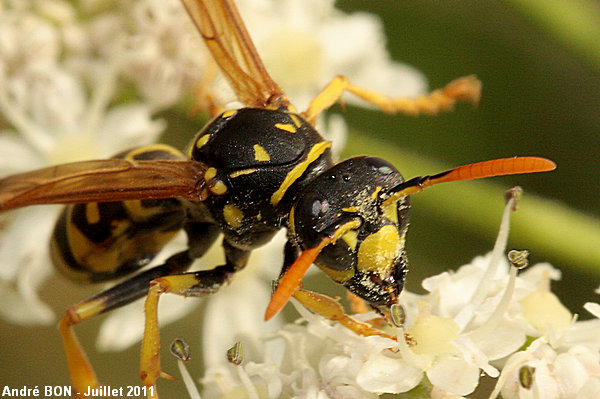
|
The yellow cheeks and clypeus indicate the Polistes dominula species. This is confirmed by the colour pattern of the antennae. |
| [To know more about the European Paper Wasp] [Next picture] [Previous picture] [Top] |
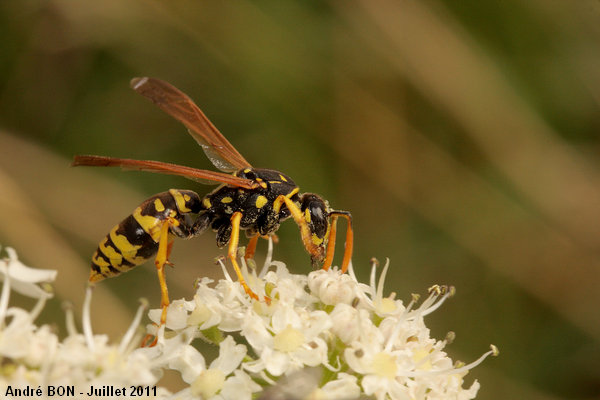
|
This more distant view of the same specimen shows the last sternite which is yellow. |
| [To know more about the European Paper Wasp] [Next picture] [Previous picture] [Top] |
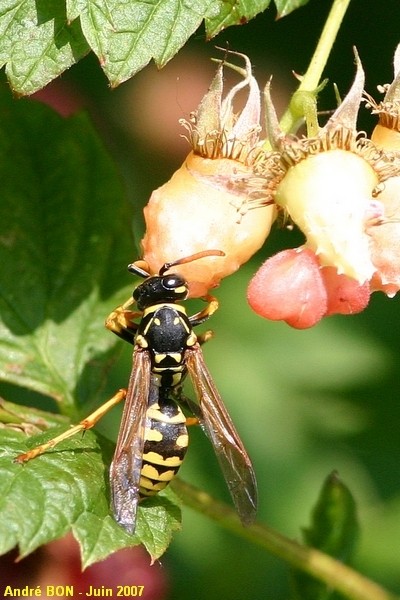
|
I have observed this Paper Wasp during its meal on my raspberries. The cheeks are yellow, the antennae are yellow with a black mark on the upper side up to the middle of the third article. This is certainly an European Paper Wasp. A front view would have been welcome to confirm... |
| [To know more about the European Paper Wasp] [Next picture] [Previous picture] [Top] |
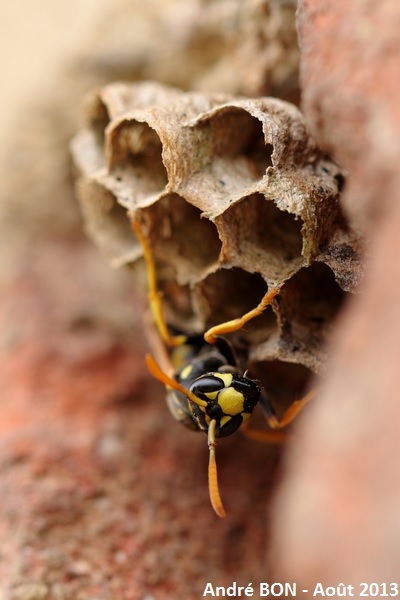
|
Here is one nest located in a hole on an old farm's wall. |
| [To know more about the European Paper Wasp] [Next picture] [Previous picture] [Top] |
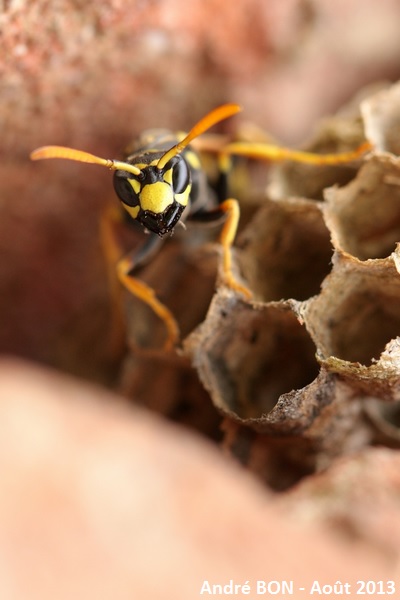
|
I have been able to approach rather close without any sign of hostility of the European Paper Wasps. |
| [To know more about the European Paper Wasp] [Next picture] [Previous picture] [Top] |
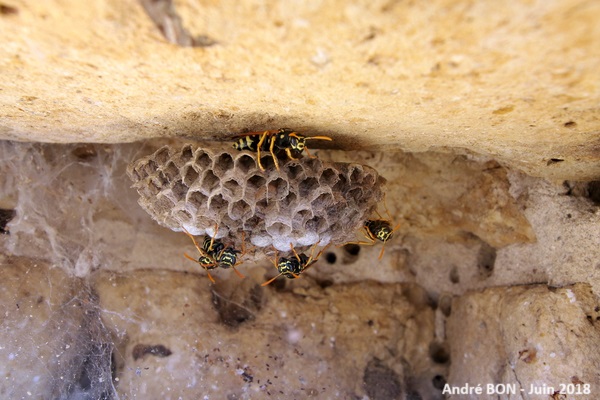
|
Here is another nest located in a hole on an old farm's wall. The last yellow sternite is visible on the wasp located at the top. The other criteria are visible on the wasps seen from the front. There is, however, a small black mark on the clypeus. |
| [To know more about the European Paper Wasp] [Next picture] [Previous picture] [Top] |
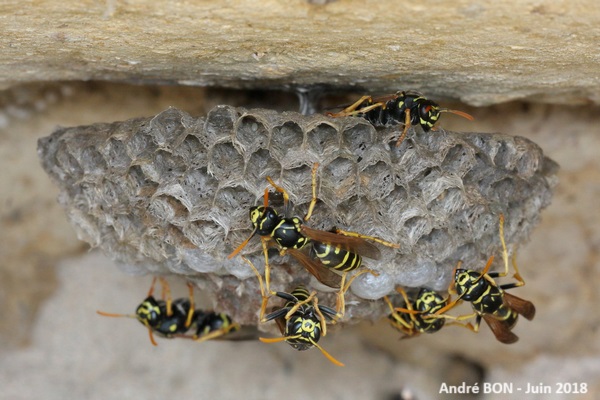
|
Another view of the same nest. It looks like an upside down mushroom. |
| [To know more about the European Paper Wasp] [Next picture] [Previous picture] [Top] |
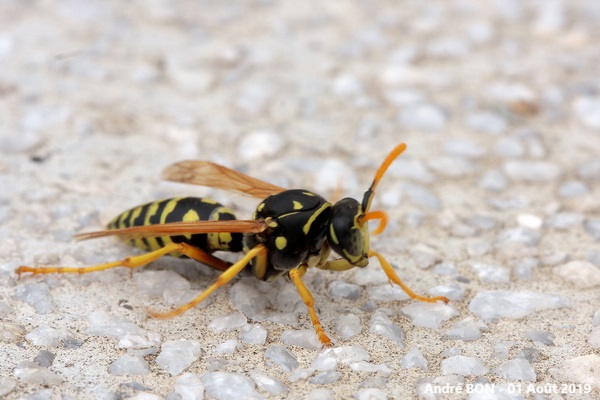
|
I think we have here a male with a yellow face and convex temples behind the eyes. |
| [To know more about the European Paper Wasp] [Previous picture] [Top] |
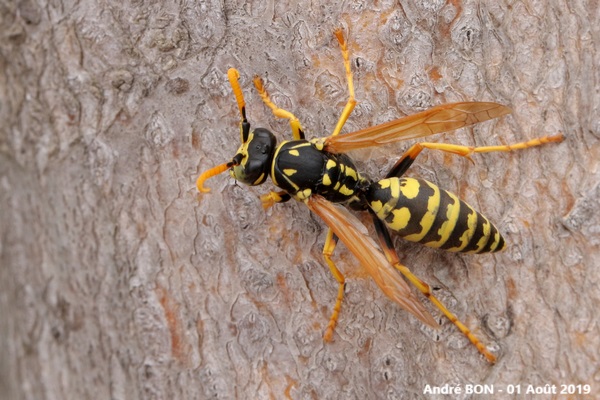
|
Top view of the same male. |